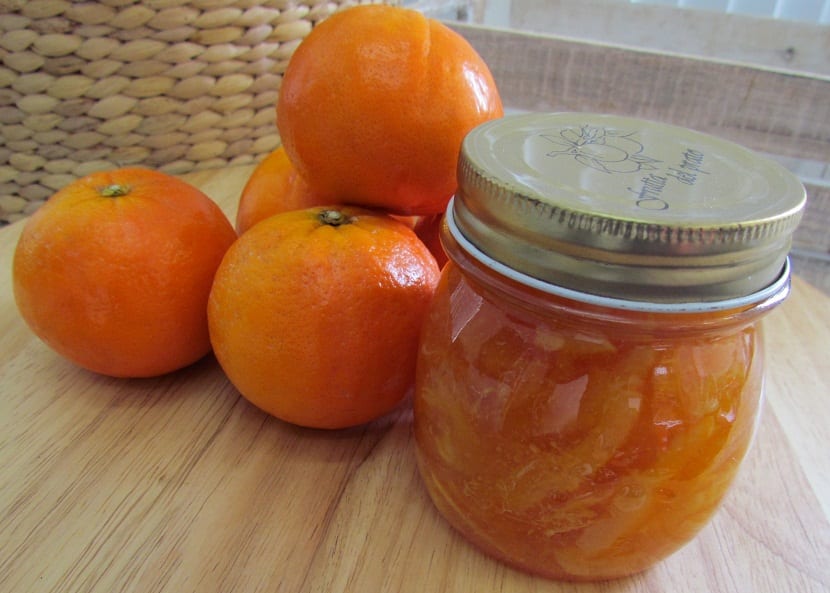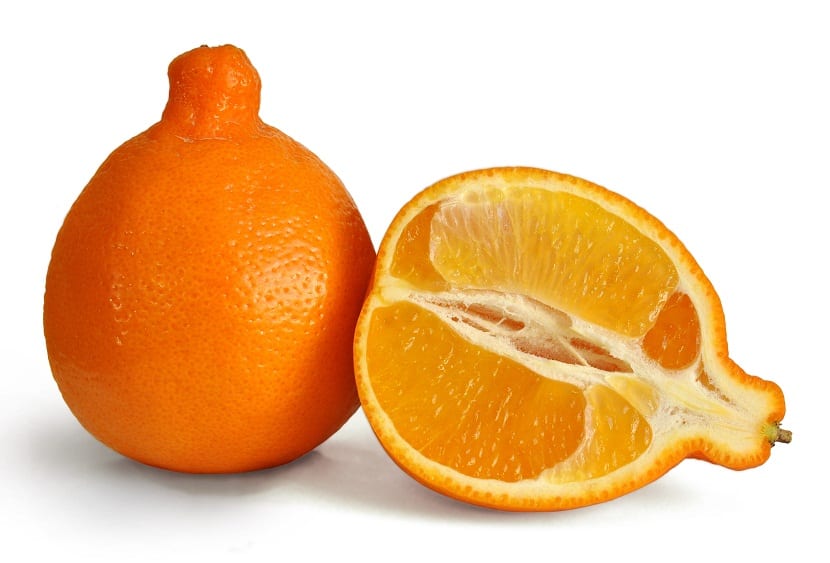
The Tangelo in a citrus fruit, hybrid between a mandarin and a grapefruit or an orange and its scientific name is Citrux x Tangelo, discovered around the year 1911,
The fruits that are marketed today correspond to the crosses made by farmers, seeking to intensify certain characteristics such as sweet taste similar to mandarin but without too much pulp, great juiciness and an extraordinary color.
Features

The mixture of these species is favored since both fruits are generically very similar and generally occur in climates and geographically similar. If the fruit trees are close enough to each other, the flowers can be pollinated without much effort and sometimes even spontaneously.
Tangelos usually have a fairly thin skin that comes off easily. It has a bright orange color and its pulp is yellow or orange. Another feature is that they usually have few seeds.
How it unites the sweet taste of mandarin and the sour sour of grapefruit, it is usually pleasantly acid. Its sweetness may vary depending on the kind of Tangelo you are buying.
Variety of tangelos
Minneola Tangelos
This species is generally found in North America and Europe. It comes from the crossing of a Dancy mandarin and a Bowen grapefruit, being a fruit with a lot of juice and a little sweet taste.
Its peel is easy to remove. The color of its pulp is orange, with small seeds and green inside. For this fruit to grow properly, it needs to be planted in cold soils, with plenty of irrigation and adequate nutrition.
Tangelo nova
It had its first appearance around the year 1950, being a fruit with a sweeter taste and it comes from the crossing of a Clementine mandarin and the Tangelo Minneola. Its main characteristics are an orange to red skin, dark orange pulp, with many seeds. Its trees are resistant to cold.
Tangelo ugli
It is believed that it was the cross between a tangerine and a grapefruit accidentally, having similar characteristics to the others, color between orange and light green, of moderate size, juicy flavor, without seeds and white inside.
Tangelo cultivation
At present the food industries seek special attention to the process of cultivation and harvest of the Tangelos, monitoring its flavor, color, size and shelf life. As the trees of this fruit are sterile, farmers have to make an effort to find the best grafts that can maintain the characteristics of the various combinations over time.
Generally its trees bloom only once a yearTaking into account that winter is when its fruits begin to ripen and remain fresh for a few weeks after harvest.
Its cultivation requires humid climates and deep, stone-free soils. They are usually large treesslightly sloping, light green leaves.
Pests

Tangelos trees are often attacked by a diversity of pests such as whiteflies, fruit flies, mites, aphids, mealybugs and diseases such as gummosis, among others.
Uses
As the fruit peels easily, it is usually ideal as an aperitif, for a snack and even to make aromatic liqueurs. In gastronomy it can be used in any dish that can be combined with citrus flavors, being very common its use in sauces, dressings, salad dressings, juices, among others.
As it is a fruit of citrus origin, people with known allergens to citrus must take special care when consuming this food. In the same way, if you take drugs that contain statins (like those used to control cholesterol), grapefruits are contraindicated as it reduces the action of the drug.